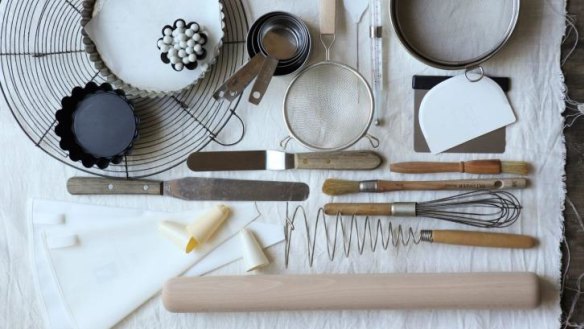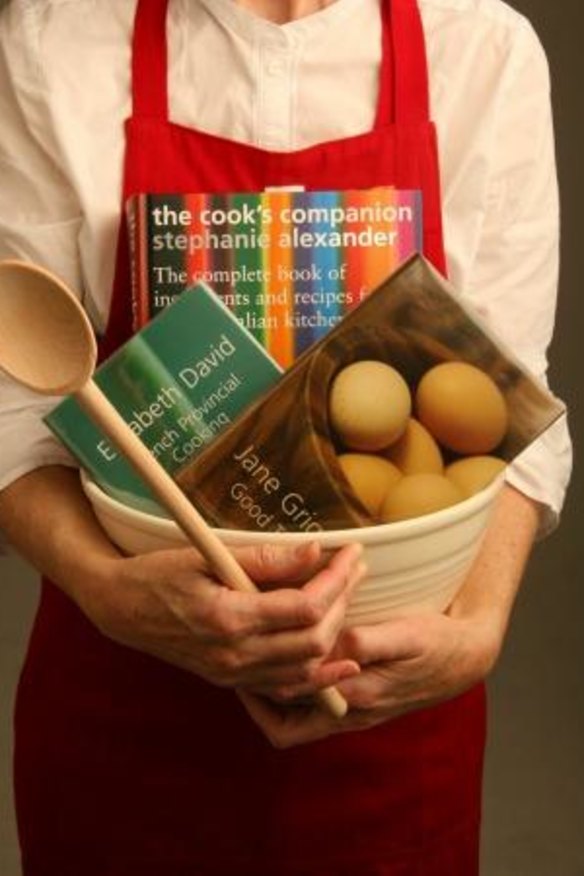Cooking the books: recipe writing 101

There are good-looking cookbooks and there are good cookbooks. The former usually sit on a coffee table, glossy and pristine while the latter are dog-eared and batter-spattered, taking pride of place in our kitchens. So what makes a good recipe and how do professionals write them?
There are two types of cook – "the pedant" reads a recipe like scripture while "the guerilla" can't stand being constrained by a a recipe's prescriptive nature. One is looking for precise instruction, the other inspiration or a spark to unleash their own creativity.
Today's "pedant" cooks are lucky. In early English recipes the author assumed a high degree of kitchen experience and didn't go to the trouble of explaining how to make the custard or sauce you might need as part of a recipe. It wasn't until 1845 that Eliza Acton began to write recipes that the modern cook would recognise with ingredients, measurements and much more detail. Acton was also the first cookery book writer to offer a personal guarantee, assuring readers that she had trialled her recipes.

While modern home cooks now expect their hand to be held, even modern cookbooks don't always get it right. A classic example is the River Cafe "chocolate nemesis", a dish much enjoyed in the London restaurant, but a steadfast disaster when it was first published for home cooks. Discussion has raged about whether it was a deliberate mistake by the author, the famously feisty Rose Gray, maybe not really wanting to divulge the recipe or simply an error.
Many Australians have grown up with the famously reliable Australian Women's Weekly cookbooks, with each recipe cooked in the publication's own test kitchen three times.
Cookbook author Belinda Jeffery, known for her reliable recipes, also tests recipes at least three or four times before publishing. She has seven golden rules for a good recipe.
1. The recipe should make the reader want to rush to the kitchen and cook it.
2. The dish must taste good.
3. A recipe is not set in stone. Ingredients, weather and even mood have an influence on the outcome of a recipe, and the dish is never going to be exactly the same each time you make it.
4. The dish should look good. This is a tricky one. Food has to be enticing, and part of that is looking good, but not at the expense of taste. Some dishes don't photograph well, and "murky" food, such as braises and casseroles, can be a nightmare to shoot.
5. Accuracy is everything, especially when it comes to baking. The measurements, temperatures, tins and times have to be spot on and explained clearly.
6. The recipe has to work. It's blindingly obvious, but it is surprising how many recipes don't.
7. The recipe has to be clear and unambiguous. As a recipe writer, you are constantly striving to be as accurate as you can with instructions.
Jeffery's approach commonly results in a paper trail of six or seven pages as she takes a recipe from original idea to the finish, with husband, Clive, as main taste-tester. "He happens to be my most fearless critic too," says Jeffery, "which is great because people can sometimes feel uncomfortable saying what they really think about a dish."
Confident cooks with a good grounding in kitchen basics, such as cooking methods and an understanding of flavour, have the advantage when it comes to putting together their own recipes.
For guerilla-style cooks, Stephanie Alexander's legendary tome A Cook's Companion could be a useful tool as it lists flavour matches or ingredient pairings, for when you need a prompt. Diehard flavour crusaders might also like Niki Segnit's The Flavour Thesaurus, a forensic examination of flavour compounds with comprehensive and adventurous pairing suggestions.
Julie Tijandra, owner of Scrumptious Reads bookstore in Brisbane's James Street recommends The Recipe Writer's Handbook by Barbara Gibbs Ostmann, The Joy of Writing a Great Cookbook by Kimberly Yorio and Recipes Into Type: A Handbook for Cookbook Writers and Editors for aspiring recipe writers.
Creating a repertoire of original recipes isn't difficult – it's simply a matter of mastering a few techniques then applying common sense, creativity and instinct to make recipes that are uniquely your own.
Barbara Sweeney and Le Cordon Bleu academic Roger Haden, will be presenting an introduction to food writing workshop on Saturday, July 11 at the Sofitel as part of Brisbane Times Good Food Month, presented by Citi. Tickets cost $149 and include morning refreshment, buffet lunch, tasting plates from Prive 249 and a copy of the Brisbane Times Good Food Guide 2016. Workshop participants also have the opportunity to write an 800 word review for consideration for publication on goodfood.com.au. Details will be provided at the workshop. See brisbane.goodfoodmonth.com/foodwriting101